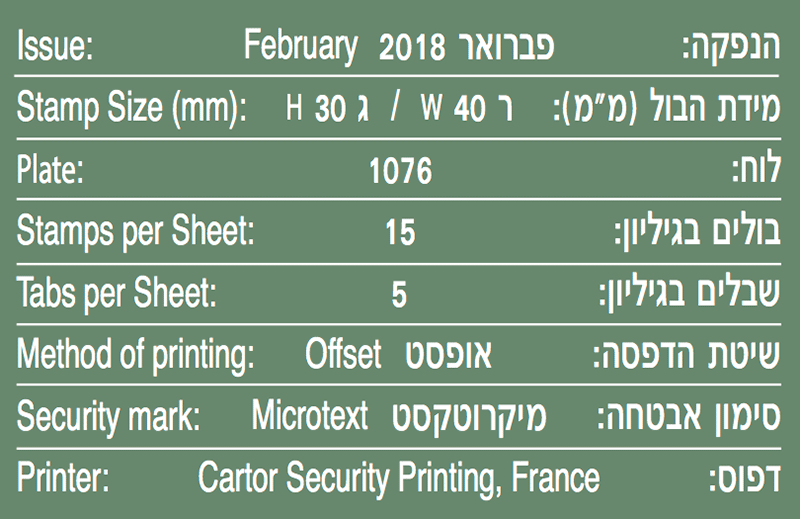[press release]
Banksias to feature on Australia Post stamp issue
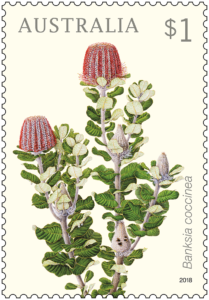 Australia Post is celebrating the botanical beauty of the Australian bushland, the banksia, in its latest stamp issue.
Australia Post is celebrating the botanical beauty of the Australian bushland, the banksia, in its latest stamp issue.
Banksias hold great historical significance to Australia. They were among the first flora species collected in Australia, during Captain Cook’s 1770 journey on the Endeavour, and scientifically described. The genus takes its name from botanist Joseph Banks who collected five species during the voyage.
Australia Post Philatelic Manager, Michael Zsolt said: “we are excited to acknowledge banksias as an Australian botanical icon, striking in both the natural landscape and in native gardens. For those with a keen interest in Australian native plants, we believe these stamps will be a popular collector’s item”.
 The genus banksia is a group of woody evergreens with diverse foliage and large, brightly-coloured flower heads that range from prostrate shrubs to trees of up to 25 metres. Of the 173 species in the genus, all but one are endemic to Australia.
The genus banksia is a group of woody evergreens with diverse foliage and large, brightly-coloured flower heads that range from prostrate shrubs to trees of up to 25 metres. Of the 173 species in the genus, all but one are endemic to Australia.
The stamps feature the artwork of celebrated Australian botanical artist Celia Rosser OAM, who was Monash University’s botanical artist from 1974 to 1999. Working alongside Australian botanist and banksia specialist Alex George, Ms Rosser produced scientifically accurate and highly detailed illustrations of banksia species. Her impressive 25-year work on the project culminated in a three-volume publication of her life-sized artworks, titled The Banksias, and earned Ms Rosser an honorary Master of Science in 1981 and an honorary PhD in 1999 from Monash University. She was awarded a Medal of the Order of Australia (OAM) in 1995 for her services to botanical art.
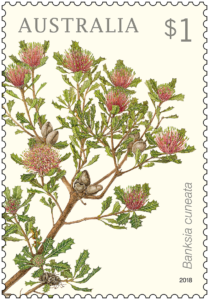 Ms Rosser said: “banksias are a great love of mine and I am thrilled Australia Post has created this stamp issue to celebrate their beauty and durability. They capture something really special about Australia”.
Ms Rosser said: “banksias are a great love of mine and I am thrilled Australia Post has created this stamp issue to celebrate their beauty and durability. They capture something really special about Australia”.
The artworks shown on the stamps and minisheet are held in the Monash University Collection. The four domestic base-rate ($1) stamps have been designed by Australia Post designer Jo Muré and feature the following species:
- Banksia speciosa which occurs naturally on Western Australia’s south-coast, and has long, triangular-lobed leaves that can reach eight metres in height.
- Banksia grossa is a small, slow-growing shrub, growing to around one metre. This fire-resistant species is limited to the north of Perth.
- Banksia coccinea is known for its bright red flower heads, highlighted by its grey-green oblong foliage. It grows to around eight metres and blooms from June through to January in Western Australia.
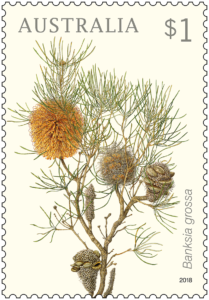 Banksia cuneata has two common names, Matchstick Banksia for its flowers and Quairading Banksia for the place it was discovered. It is listed “endangered”, with less than 2,500 mature trees evident in the wild.
Banksia cuneata has two common names, Matchstick Banksia for its flowers and Quairading Banksia for the place it was discovered. It is listed “endangered”, with less than 2,500 mature trees evident in the wild.
The stamp issue products include a minisheet, first day cover, stamp pack, set of four maxicards and booklet of 20 x $1 stamps. They are available from 20 February 2018 at participating Post Offices, via mail order on 1800 331 794, and online at auspost.com.au/stamps while stocks last.
For more information visit auspostcollectables.com.au .

 OTTAWA, ON – February 8, 2018 – The War Amps officially launched its 100th anniversary year today with the unveiling of a Canada Post commemorative envelope, at the Association’s National Headquarters in Ottawa.
OTTAWA, ON – February 8, 2018 – The War Amps officially launched its 100th anniversary year today with the unveiling of a Canada Post commemorative envelope, at the Association’s National Headquarters in Ottawa.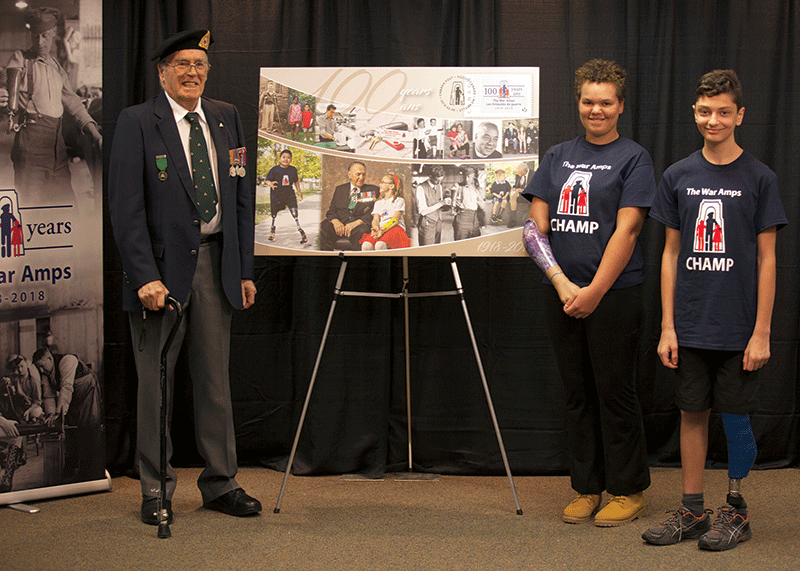

 The U.S. Postal Service confirms to The Virtual Stamp Club that there is a Priority Mail stamped-envelope with the design of the new Priority Mail stamp.
The U.S. Postal Service confirms to The Virtual Stamp Club that there is a Priority Mail stamped-envelope with the design of the new Priority Mail stamp. The envelope with the same first-day pictorial cancellation as for the stamp (shown on the left here) can also be ordered from SFS, at
The envelope with the same first-day pictorial cancellation as for the stamp (shown on the left here) can also be ordered from SFS, at 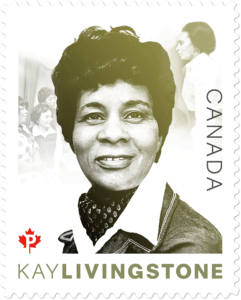 A long-time Toronto resident, Kathleen Livingstone was an activist, humanitarian and popular radio host devoted to the empowerment of Black women. She founded the Canadian Negro Women’s Association in the 1950s and, in 1975, launched the Congress of Black Women of Canada – now a nationwide organization. In 2011, she was named a Person of National Historic Significance by the Government of Canada.
A long-time Toronto resident, Kathleen Livingstone was an activist, humanitarian and popular radio host devoted to the empowerment of Black women. She founded the Canadian Negro Women’s Association in the 1950s and, in 1975, launched the Congress of Black Women of Canada – now a nationwide organization. In 2011, she was named a Person of National Historic Significance by the Government of Canada.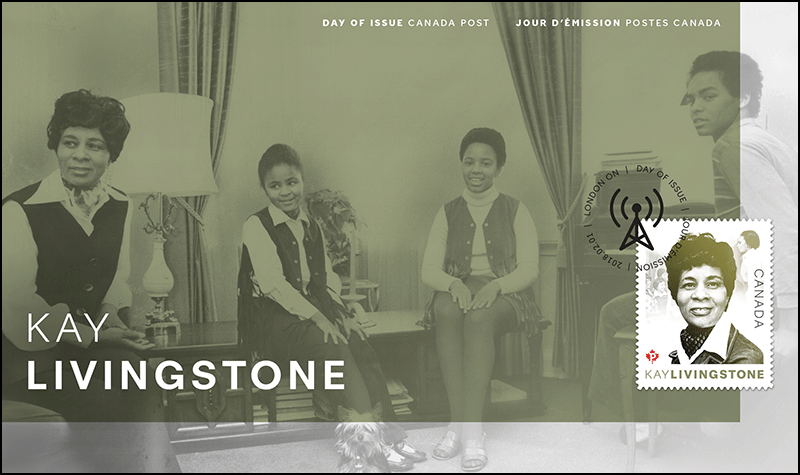
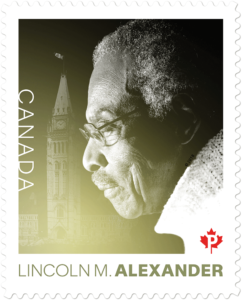 Toronto-born Lincoln MacCauley Alexander had a distinguished career as a public servant and became a leader in the fight for racial equality. He was the first Black Canadian to be elected to the House of Commons (1968), appointed to the federal Cabinet (1979) and named to a viceregal position in Canada, as Lieutenant Governor of Ontario (1985). He encouraged countless young people to pursue their dreams – often telling them, “I did it. You can. You will.”
Toronto-born Lincoln MacCauley Alexander had a distinguished career as a public servant and became a leader in the fight for racial equality. He was the first Black Canadian to be elected to the House of Commons (1968), appointed to the federal Cabinet (1979) and named to a viceregal position in Canada, as Lieutenant Governor of Ontario (1985). He encouraged countless young people to pursue their dreams – often telling them, “I did it. You can. You will.”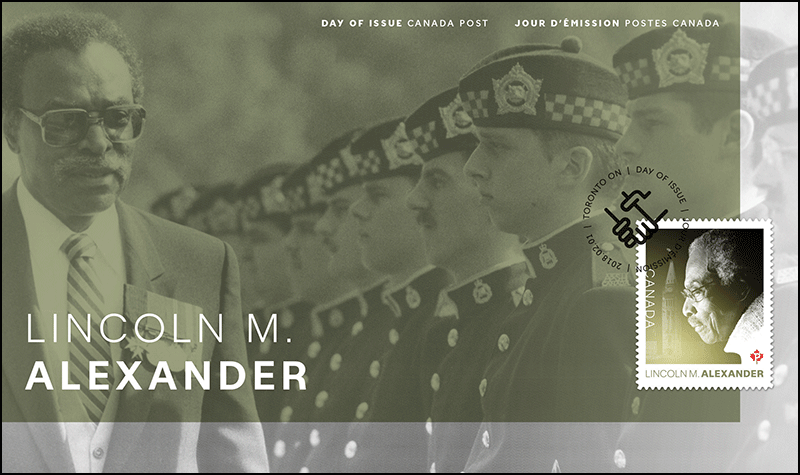

 CALGARY – Weeks before the cauldrons are lit for the Winter Olympic and Paralympic Games in South Korea, Canada Post lifted the veil on stamps that honour some of the most accomplished athletes Canada has known.
CALGARY – Weeks before the cauldrons are lit for the Winter Olympic and Paralympic Games in South Korea, Canada Post lifted the veil on stamps that honour some of the most accomplished athletes Canada has known. “The women who share the podium in these stamps broke barriers, inspired generations and have contributed to our country’s national story both on and off of the ice and snow,” says Deepak Chopra, President and CEO of Canada Post. “They have been ambassadors for their sports, impressive role models and a great source of national pride.”
“The women who share the podium in these stamps broke barriers, inspired generations and have contributed to our country’s national story both on and off of the ice and snow,” says Deepak Chopra, President and CEO of Canada Post. “They have been ambassadors for their sports, impressive role models and a great source of national pride.”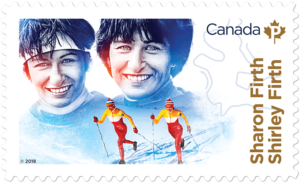 Sharon and Shirley Firth
Sharon and Shirley Firth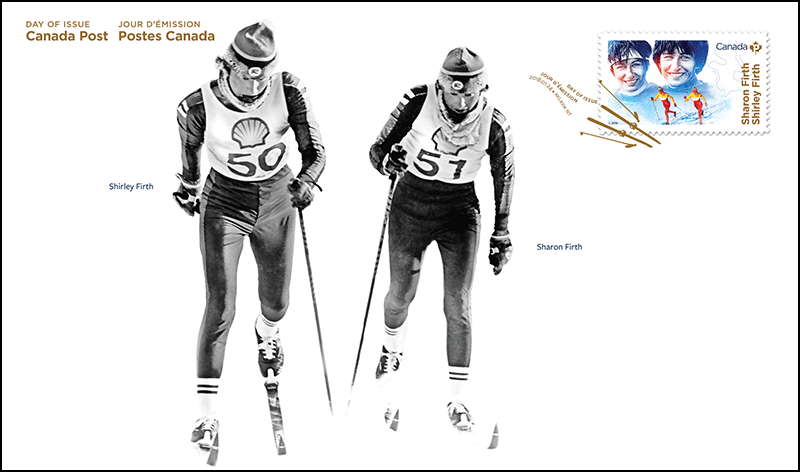
 Sonja Gaudet
Sonja Gaudet
 Danielle Goyette
Danielle Goyette
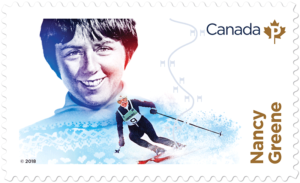 Nancy Greene
Nancy Greene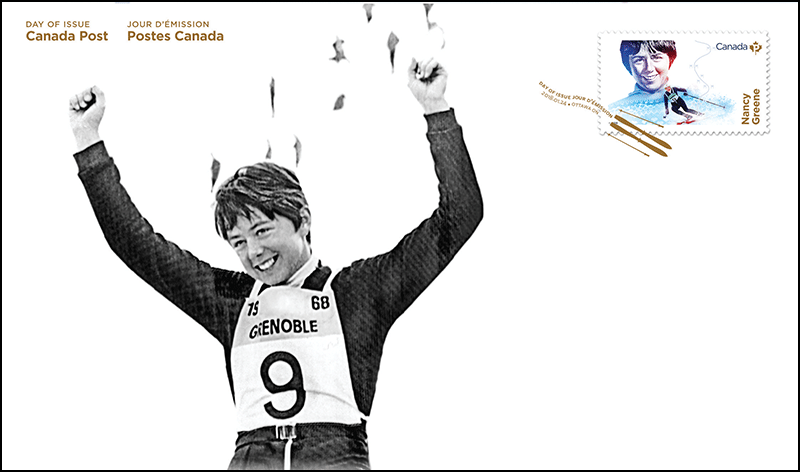
 Clara Hughes
Clara Hughes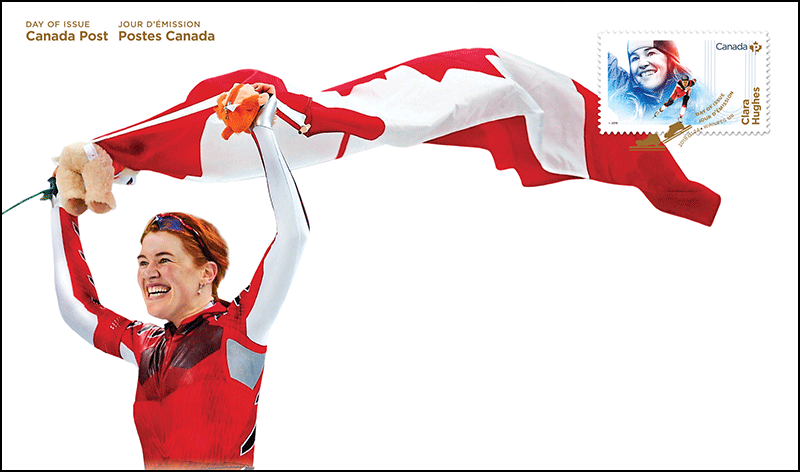
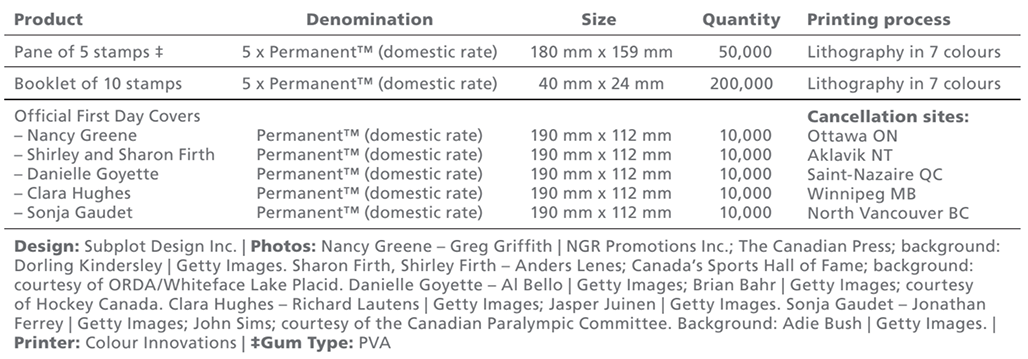
 18th January 2018 — Five of Australia’s much loved television personalities will today be honoured in Australia Post’s 2018 Legends Awards to celebrate their significant contribution to the country’s entertainment industry.
18th January 2018 — Five of Australia’s much loved television personalities will today be honoured in Australia Post’s 2018 Legends Awards to celebrate their significant contribution to the country’s entertainment industry. tertainment careers.
tertainment careers. Now in its 22nd year, the Australia Post Legends Award celebrates the lives of living Australians who have made a unique contribution, inspired the community and influenced the way Australians think about themselves and the community.
Now in its 22nd year, the Australia Post Legends Award celebrates the lives of living Australians who have made a unique contribution, inspired the community and influenced the way Australians think about themselves and the community. at official Australia Day Council events hosted in Melbourne and Sydney, with the first luncheon taking place in Melbourne today. Each Legend will be presented with a unique 24-carat gold replica of their stamp at the luncheon.
at official Australia Day Council events hosted in Melbourne and Sydney, with the first luncheon taking place in Melbourne today. Each Legend will be presented with a unique 24-carat gold replica of their stamp at the luncheon.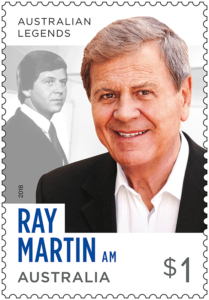
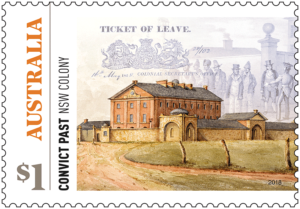 Land (Tasmania) and Swan River (Western Australia).
Land (Tasmania) and Swan River (Western Australia).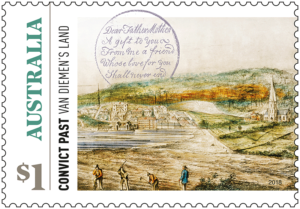 The Van Diemen’s Land stamp (right) represents the World Heritage-listed Port Arthur – a penal settlement for men and operated from 1830 to 1877. The penitentiary is one of the site’s most recognisable buildings. The stamp design also features a graphic of a convict love token, which is believed to relate to John Camplin, a 15-year-old convicted of stealing a silver watch, who received the death penalty, which was later commuted to life imprisonment.
The Van Diemen’s Land stamp (right) represents the World Heritage-listed Port Arthur – a penal settlement for men and operated from 1830 to 1877. The penitentiary is one of the site’s most recognisable buildings. The stamp design also features a graphic of a convict love token, which is believed to relate to John Camplin, a 15-year-old convicted of stealing a silver watch, who received the death penalty, which was later commuted to life imprisonment.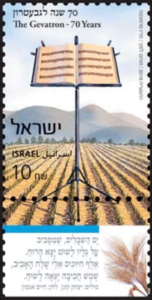 The Gevatron Chorus was founded in 1948 by a group of young people from Kibbutz Kvutzat Geva in the Jezreel Valley to perform at the dedication ceremony for a new basketball court.
The Gevatron Chorus was founded in 1948 by a group of young people from Kibbutz Kvutzat Geva in the Jezreel Valley to perform at the dedication ceremony for a new basketball court. The Gevatron has a rich repertoire, comprised of songs written especially for the troupe as well as its own versions of familiar Israeli songs. The troupe is mostly identified with “songs of the homeland” and songs about settling the country, although it has recorded numerous styles and arrangements. Some of its most well known songs are: Yam Hashibolim (Sea of Grain Stalks), Emek Sheli (My Valley), Gvanim (Color Shades), Nitsanim Niru Ba’aretz (Flowers Appeared in the Land), El Borot Hamayim (To the Cisterns), Or Ve’Yerushalayim (Light and Jerusalem), Ha’Hita Zomachat Shuv (The Wheat Sprouts Again) and Bat Shishim (At Sixty).
The Gevatron has a rich repertoire, comprised of songs written especially for the troupe as well as its own versions of familiar Israeli songs. The troupe is mostly identified with “songs of the homeland” and songs about settling the country, although it has recorded numerous styles and arrangements. Some of its most well known songs are: Yam Hashibolim (Sea of Grain Stalks), Emek Sheli (My Valley), Gvanim (Color Shades), Nitsanim Niru Ba’aretz (Flowers Appeared in the Land), El Borot Hamayim (To the Cisterns), Or Ve’Yerushalayim (Light and Jerusalem), Ha’Hita Zomachat Shuv (The Wheat Sprouts Again) and Bat Shishim (At Sixty).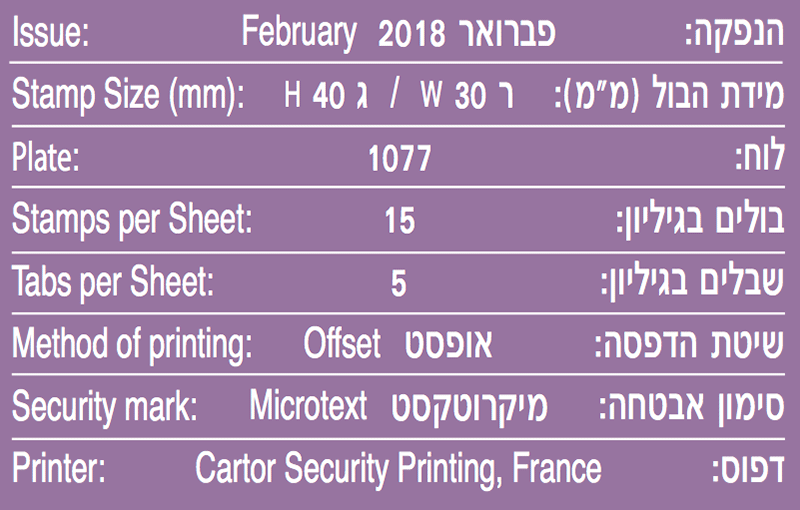
 “The Chizbatron Troupe was established from within the Palmach during Israel’s War of Independence and accompanied the paupers’ army that arose from the underground organizations to face intense war”, said poet Haim Gouri.
“The Chizbatron Troupe was established from within the Palmach during Israel’s War of Independence and accompanied the paupers’ army that arose from the underground organizations to face intense war”, said poet Haim Gouri.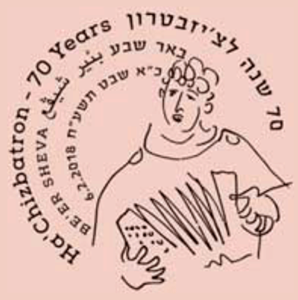 The first production included improvised skits and foreign melodies to which Haim Hefer added well written texts. Shaike Ophir and Naomi Polany were recruited from among the Palmach ranks, accompanied by Yoel Zilber on the accordion. The Negev desert area was under siege at that time, and was accessible only via air. The troupe flew south and went from post to post, where they were received very warmly. While en route to Kibbutz Be’eri, the troupe’s truck drove over a landmine. Troupe member Ohela Halevy was seriously injured and recognized as an IDF disabled veteran. This event of course changed things and it was necessary to reorganize and even write new material. Director Shmuel Bunim came into the picture and new troupe members were recruited.
The first production included improvised skits and foreign melodies to which Haim Hefer added well written texts. Shaike Ophir and Naomi Polany were recruited from among the Palmach ranks, accompanied by Yoel Zilber on the accordion. The Negev desert area was under siege at that time, and was accessible only via air. The troupe flew south and went from post to post, where they were received very warmly. While en route to Kibbutz Be’eri, the troupe’s truck drove over a landmine. Troupe member Ohela Halevy was seriously injured and recognized as an IDF disabled veteran. This event of course changed things and it was necessary to reorganize and even write new material. Director Shmuel Bunim came into the picture and new troupe members were recruited.
 When WWI broke out in August 1914, the Ottoman Empire formed an alliance with the Central Powers (Germany and Austria) against the Allies (Britain, France and Russia). The Great War, as it was known at the time, went on for more than four years and fundamentally changed world history in general and the situation in Eretz Israel in particular.
When WWI broke out in August 1914, the Ottoman Empire formed an alliance with the Central Powers (Germany and Austria) against the Allies (Britain, France and Russia). The Great War, as it was known at the time, went on for more than four years and fundamentally changed world history in general and the situation in Eretz Israel in particular. The stamp features an Indian cavalryman (Library of Congress, from photos of the American Colony in Jerusalem) against the background of the Indian Cavalry battalion in the streets of lower Haifa (Imperial War Museum). The tab features the insignia of the Indian army’s Ramchi Jodphur battalion.
The stamp features an Indian cavalryman (Library of Congress, from photos of the American Colony in Jerusalem) against the background of the Indian Cavalry battalion in the streets of lower Haifa (Imperial War Museum). The tab features the insignia of the Indian army’s Ramchi Jodphur battalion.